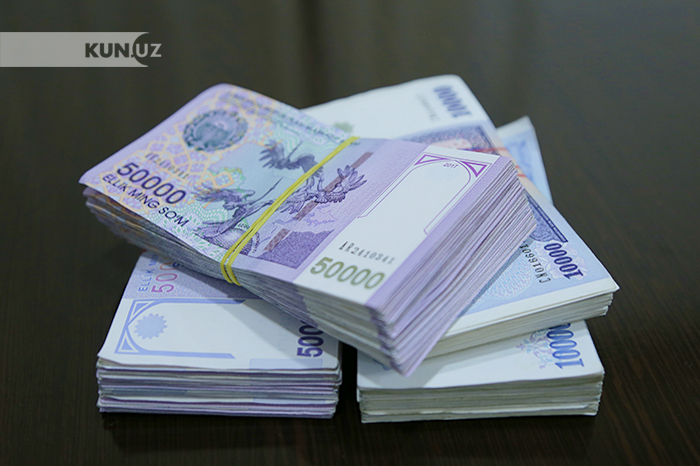Although the Great Depression was not caused by a pandemic, the situation at that time was worse than the current crisis. However, the uncertainty in society is growing due to the coronavirus pandemic, just as it was during the Great Depression. Therefore, we have to put a trust. Trust in the Government of Uzbekistan, trust in measures taken to reduce the spread of coronavirus, protect the population, overcome the crisis without major losses and revive the economy in the post-crisis period, including the monetary and foreign exchange policies of the Central Bank.
As of April 14, 2020, the exchange rate of the soum against the US dollar in the domestic currency market was 9,793 soums. Before the end of the working day, the Central Bank announced that the bank rate was reduced by 1 percentage point, to 15 percent. After an unexpected decision of the regulator, commercial banks, which began to offer purchase and sale operations in US dollars through exchange offices in the rate 9,780-9,850 soums at the beginning of the day, raised it to 10,140-10,150 soums by its end. As a result, a number of economists and experts expressed their personal opinion on the devaluation of the national currency. Also, some experts presented their forecasts on the soum exchange rate at the end of 2020.
Naturally, in this situation, the following questions arise:
- What are the main factors causing the devaluation of the soum?
- Why has the national currency, which stabilized against the US dollar at about 9,500 soums since the beginning of the year, started to depreciate again from the first days of April?
We will try to answer these questions below.
A decrease in exports compared to imports led to a decrease in the supply of foreign currency in the domestic foreign exchange market.
In the 1st quarter of 2019, revenue from the export of goods and services increased by 20.6% compared to the same period of 2018 and to some extent satisfied the demand for foreign currency in the domestic foreign exchange market. In the 1st quarter of this year, due to the crisis caused by the coronavirus pandemic, the volume of exports decreased by 10.9% compared to the 1st quarter of 2019 (Figure 1). This explains why in the past period of this year, the supply of foreign currency in the domestic foreign exchange market was so low.
At the beginning of 2020, prices for raw materials (oil, gas, non-ferrous metals, including copper) on world markets fell sharply as a result of the coronavirus pandemic in China – one of the main trading partners of Uzbekistan – and a slowdown in its economy.
In addition, due to measures against the pandemic, the demand of China for goods and services manufactured in Uzbekistan has significantly decreased. Simultaneously, demand for Uzbek products in other major markets, connected with China through the global value chain, also decreased. As the coronavirus epidemic turned into a pandemic and the borders closed, its influence expanded even further. Thus, in January-March 2020, Uzbekistan’s exports to China decreased by $426 million compared to the same period in 2019, to Russia - by $106 million, to Kazakhstan - by $94.4 million (Figure 2).
On the other hand, while foreign exchange earnings from exports decreased, the demand for imported goods and services remains high, though it also decreased negligibly. This increases pressure on the exchange rate, creating an imbalance in supply and demand in the domestic currency market.
For example, the volume of goods and services imported from seven major trading partners, which accounts for 70% of the total imports of Uzbekistan, decreased by $294 million compared to the 1st quarter of 2019. In particular, the volume of goods and services imported from China in the 1st quarter of 2020 decreased by $73.5 million compared to the same period in 2019, from South Korea – by $147.6 million, from Kazakhstan – by $13 million, from Turkey – by $66.4 million, from the USA - by $17.7 million (Figure 3).
Because national currencies of the main trading partners of Uzbekistan devaluated, the exchange rate of the soum also experience changes.
A serious outbreak of the coronavirus in China in January 2020 and a decrease in oil demand in the Chinese economy led to a significant drop in world oil prices. In addition, the inability of the OPEC countries to reach an agreement on reducing oil production and a price “war” between Saudi Arabia and Russia put even greater pressure on declining prices, and as a result, oil prices plummeted. This affected the exchange rates of national currencies of Russia and Kazakhstan, the major trading partners of Uzbekistan (Figure 4).
As of April 14, 2020, the Kazakh tenge depreciated by 12.1% compared to the beginning of the year, the Russian ruble – by 18.8%, and the soum – by 1.95%.
The depreciation of the tenge and the ruble will lead to a decrease in prices for goods and services produced in Kazakhstan and Russia. In this situation, the demand for foreign currency in the domestic foreign exchange market will grow, and the soum will begin to depreciate. As a result, the exchange rate of the soum will be adjusted according to the values of the tenge and the ruble.
The decrease in remittances due to the coronavirus crisis leads to a lack of currency supply in the domestic currency market.
In previous years, cross-border money transfers to our country satisfied a certain part of the demand for foreign currency in the domestic foreign exchange market.
Due to the quarantine measures taken by countries, which are popular among Uzbek labor migrants (in particular Russia and Kazakhstan), to reduce the spread of coronavirus infection, the volume of remittances to Uzbekistan in the 1st quarter significantly decreased compared to the same period last year. In particular, the volume of remittances in March this year decreased by 23% compared to February and amounted to $296 million.
Conclusion
At present, the devaluation of the national currency is caused by several factors: decrease in foreign currency from exports and cross-border money transfers, high demand for imported goods and services and the devaluation of national currencies of the main trading partners.
As the exchange rate of the soum changes according to the national currencies of the main trading partners, the goods and services produced in Uzbekistan will become more competitive, and the foreign currency flow from exports will renew. In turn, the devaluation of the national currency will make imported goods and services more expensive than domestic ones, and will, consequently, lead to a reduction in imports.
High interest rates in the financial sector of Uzbekistan also contribute to the influx of foreign investment into the country.
The above factors stabilize the exchange rate by balancing the supply and demand for foreign currency in the domestic currency market.
Written by Khalilulloh Khamidov;
translated by Umarkhon Yakubjonov;
edited by Doniyor Tukhsinov






